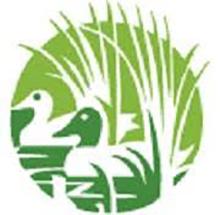
Wetlands protected in southern Quebec
By Jessica Shea
“Listen to the loons,” my grandmother whispered to me on a still summer morning on the front porch of our cottage in south-western Quebec. The lake and my cousins were still asleep. Only my grandmother, the loons, and I saw the morning’s mist. The black and white water birds made their slow morning patrol of the lake, no siren necessary, just their legendary call.
The memory comes to me while working as a freelance writer in California, half a continent away from my cottage, talking on the phone with Joel Bonin. Bonin works at the Nature Conservancy of Canada (NCC) and is telling me about securing Kenauk, 14,000 acres of wetlands, lakes, and forests in southern Quebec. I know the landscape well. He describes the waterfowl nesting in the wetlands and the beaver whose dams create more aquatic habitat and the blueberry bushes that provide cover for birds’ clutches. I find all this interesting—I love nature—but when Bonin talks about the loons, it hits home.
“Loons have a 40 year lifespan. There are 12 nesting pairs of loons on main lake in Kenauk,” Bonin says. “Loons are a priority bird species for research because they are one of the top predators and act as bioindicators of the health of a lake as well as the other species that live there.”
NCC secured Kenauk with the support from the North American Wetlands Conservation Act (NAWCA). The conservation project protects breeding, nesting, and staging habitat for wood duck, American black duck, common goldeneye, as well as habitat for belted kingfishers, loons, geese, herons, mergansers, hawks, owls, cormorants, and large mammals like wolves, moose and bear, and countless species of songbirds. Located halfway between Ottawa and Montreal, the project secures 60 lakes nestled in a matrix of Great Lakes mixed forest and provides habitat for 36 species at risk.
NCC has worked with the government of Quebec to survey the land using lidar (remote sensing with lasers). The work has revealed 3,000 previously unknown wetlands, mostly vernal pools. Another of NCC’s actions in Kenauk has been to give beaver free reign of the area. In the past, beavers were harvested heavily as a way to improve timber logging. Now, technology will help monitor how much the beaver increase the acreage of wetlands.
In the future, NCC will seek to expand protection and establish a research station in partnership with the Kenauk Institute and academic institutions. The Kenauk Institute is a local nonprofit dedicated to research and education about nature in the area. When complete, the research station will be the largest research station in northern temperate forest.
I wait until the end of our hour-long interview to reveal my connection to the lakes and loons in Quebec. I tell Bonin that I grew up in Upstate New York and began going to my family’s lake before I was even a year old. It is my home. “My soul lives there,” I say. And I mean it.
Bonin recognizes my deep connection to the land. “The future of our landscapes depends on humans being able to pass on that connection to place to their families,” Bonin says. “Every NCC project is a project of family and people.” In fact, NCC became involved in purchasing Kenauk when four people who loved the land, and had long-standing connections to it, learned that it was up for sale.
“Thirty years of investment through NAWCA isn’t even full life of a loon, but it is considered a generation in human time,” says Bonin, reflecting on the impact of NAWCA. Kenauk will be conserved for generations of loons and people to come.
NAWCA has provided funding for wetland habitat preservation projects in the U.S., Canada, and Mexico since 1989 and has grown into one of the most significant conservation programs in history. More than 3,000 NAWCA-funded projects have conserved 30 million acres of wetlands and associated upland habitats, which is an area about the size of Pennsylvania. NAWCA grants totaling more than $1.7 billion have utilized $3.6 billion in matching funds and another
$1.4 billion in non-matching funds from thousands of partners.
The projects span nearly every state, territory, and province in Canada, the U.S., and Mexico. The goal of the multi-billion dollar grant program is to guarantee waterfowl and other wetland-dependant species a diversity of habitats across the continent, from breeding to wintering grounds, in perpetuity.
NAWCA-funded projects across Canada, the U.S., and Mexico have improved birdwatching, hunting, fishing, and other outdoor recreation opportunities on public lands. Habitats conserved through NAWCA projects have far reaching impacts. For example, the conserved wetlands store water and recharge aquifers, which helps secure future water supplies. Healthy wetlands also improve water quality by removing phosphates, nitrogen, and pesticides. When wetlands are restored to their natural states, they help prevent soil erosion during floods.
